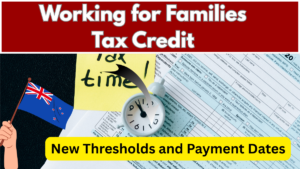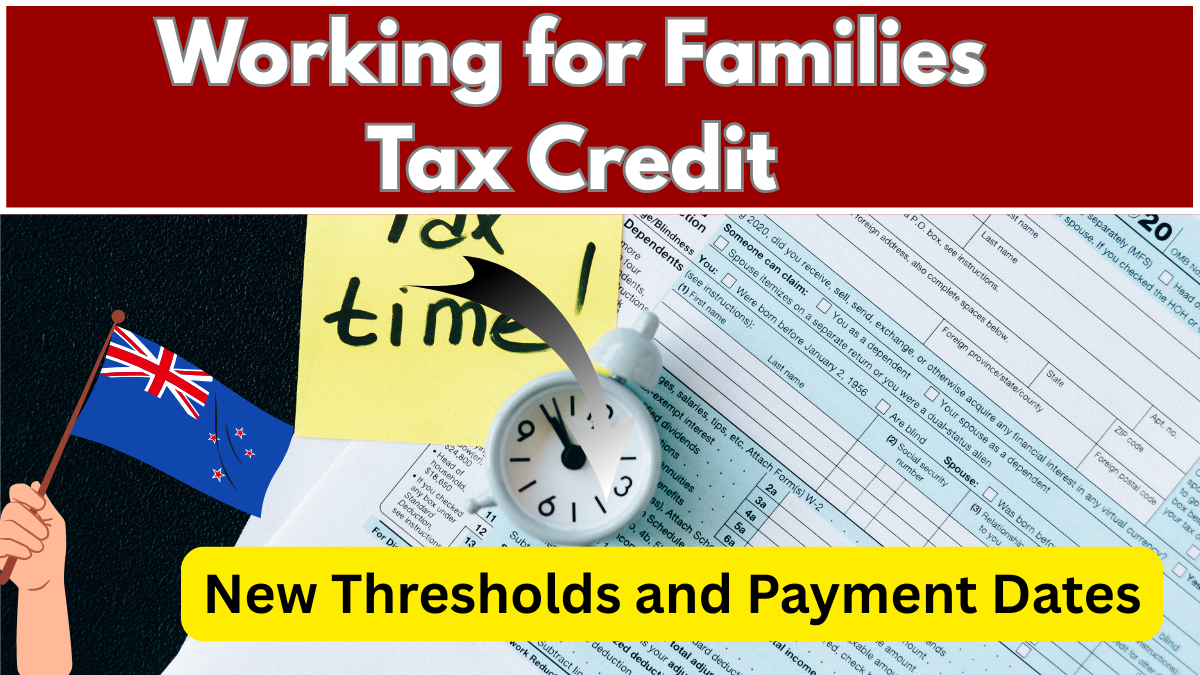If you’re a parent or caregiver in New Zealand, understanding the Working for Families 2025 updates is essential. The Inland Revenue Department (IRD) has released new thresholds and payment schedules for the 2024–2025 tax year, impacting various tax credits like the Family Tax Credit (FTC), In-Work Tax Credit (IWTC), Minimum Family Tax Credit (MFTC), and Best Start Tax Credit (BSTC).
Here’s a comprehensive guide to help you navigate these changes.

Family Tax Credit (FTC) and In-Work Tax Credit (IWTC) Thresholds
The FTC provides financial support to families with dependent children, regardless of their employment status. The IWTC is an additional payment for families who are working.
For the period from 1 April 2024 to 31 March 2025, the weekly payment amounts vary based on family income and the number of children. For instance:
-
A family earning between $117,501 and $119,000 annually with one child may receive:
-
FTC: $56 per week
-
IWTC: $102 per week
-
-
A family earning between $119,001 and $120,500 annually with two children may receive:
-
FTC: $87 per week
-
IWTC: $212 per week
-
These amounts are estimates and may change based on individual circumstances. For detailed calculations, refer to the IRD’s official guide .
Minimum Family Tax Credit (MFTC)
The MFTC ensures that working families have a minimum income level. For the 2024–2025 tax year:
-
Families with an annual income below $35,204 after tax (or $41,483 before tax) may be eligible.
-
The weekly MFTC payment decreases as income increases. For example:
-
Income between $0 and $9,500 annually: $677 per week
-
Income between $39,501 and $41,000 annually: $31 per week
-
These figures are subject to change, and families should consult the IRD’s resources for personalized information .
Best Start Tax Credit (BSTC)
The BSTC supports families with young children:
-
First year of a child’s life: All eligible families receive $73 per week, regardless of income.
-
Second and third years: Payments are income-tested. For example:
-
Families earning between $108,501 and $110,000 annually with one qualifying child receive $22 per week.
-
Payments decrease as income increases, phasing out completely at higher income levels.
-
For a detailed breakdown, refer to the IRD’s official documentation .
Payment Schedules
Families can choose how they receive their Working for Families payments:
-
Weekly
-
Fortnightly
-
Lump sum after the end of the tax year
It’s important to note:
-
If your income is consistent, weekly or fortnightly payments may be suitable.
-
If your income fluctuates, a lump sum payment might be more appropriate to avoid overpayments .
Important Considerations
-
Income Changes: If your income increases and you receive more than your entitlement, you may need to repay the excess.
-
Updating Information: Always inform the IRD of any changes in your family or income circumstances to ensure accurate payments.
-
Eligibility: To qualify for these credits, you must meet specific criteria, including residency requirements and being the principal caregiver of a dependent child.
Conclusion
The 2025 updates to the Working for Families tax credit could mean more money in your pocket — but only if you meet the new criteria and apply correctly. Staying informed about the updated thresholds and payment schedules ensures you don’t miss out on vital financial support. Be proactive by reviewing your family’s eligibility and submitting the necessary paperwork early to enjoy a smoother experience throughout the year.
FAQs
When do the new Working for Families thresholds apply?
The updated thresholds are effective from 1 April 2024 to 31 March 2025.
How do I apply for Working for Families tax credits?
You can apply through the Inland Revenue Department’s website or contact them directly for assistance.
Can I receive both the In-Work Tax Credit and the Independent Earner Tax Credit?
No, you cannot receive both simultaneously. If you’re eligible for the In-Work Tax Credit, you must change your tax code accordingly .
What happens if I underestimate my income?
If you receive more than your entitlement due to underestimating your income, you’ll need to repay the excess amount. It’s crucial to keep your income estimates accurate and update the IRD with any changes.
Aanchal is a passionate writer with a keen interest in storytelling, content creation, and creative expression. She enjoys exploring diverse topics and crafting engaging narratives that captivate readers.

